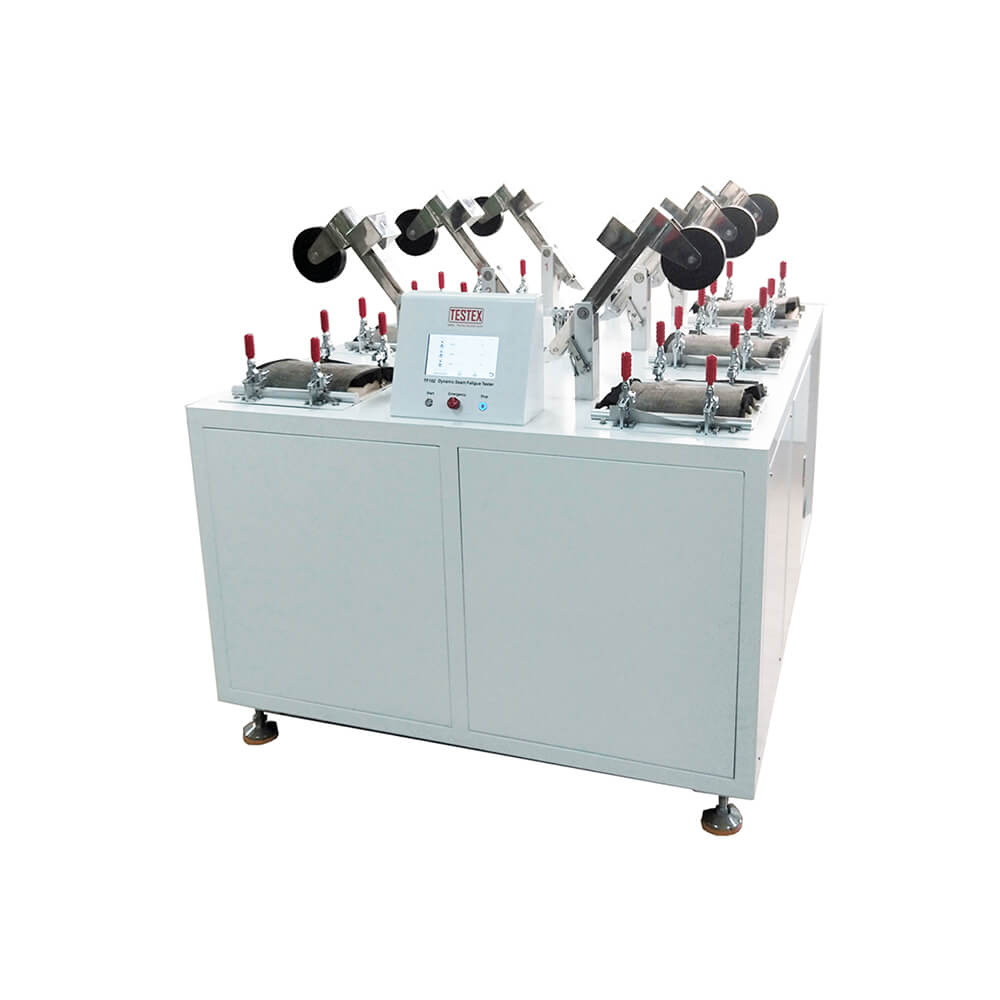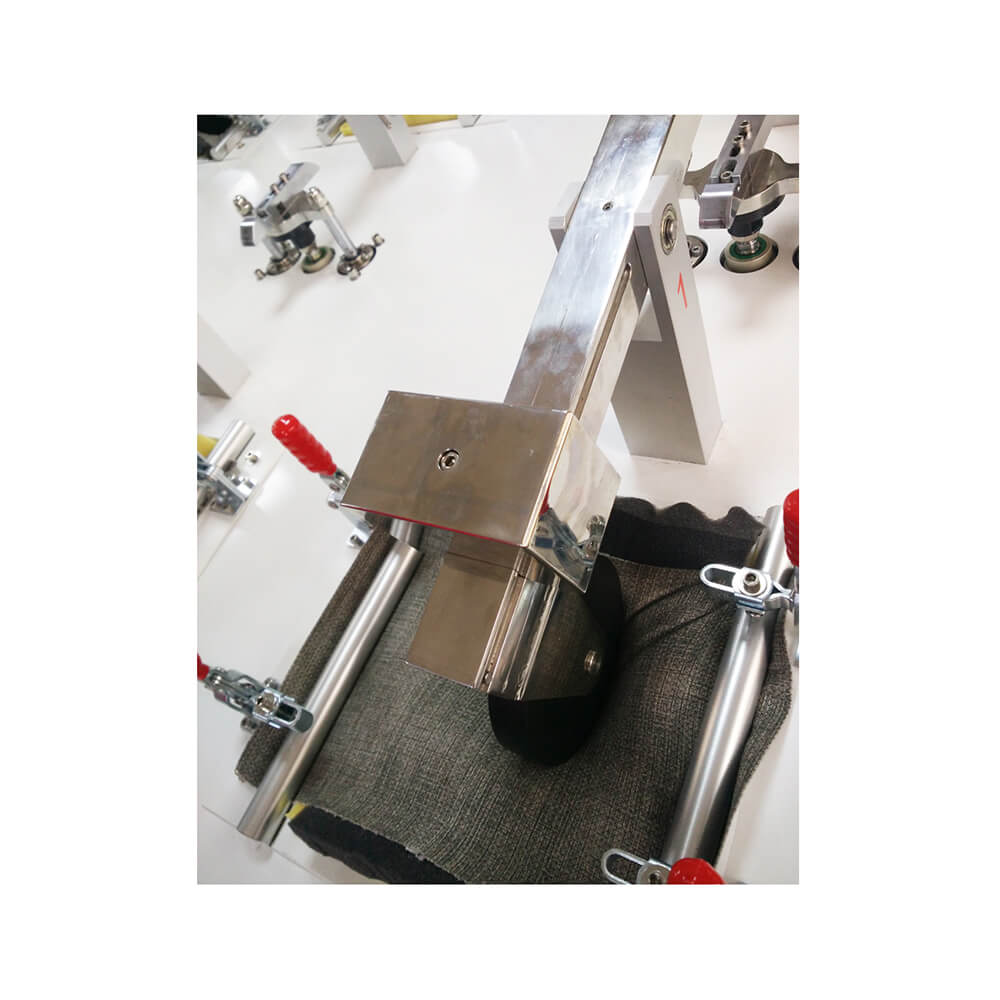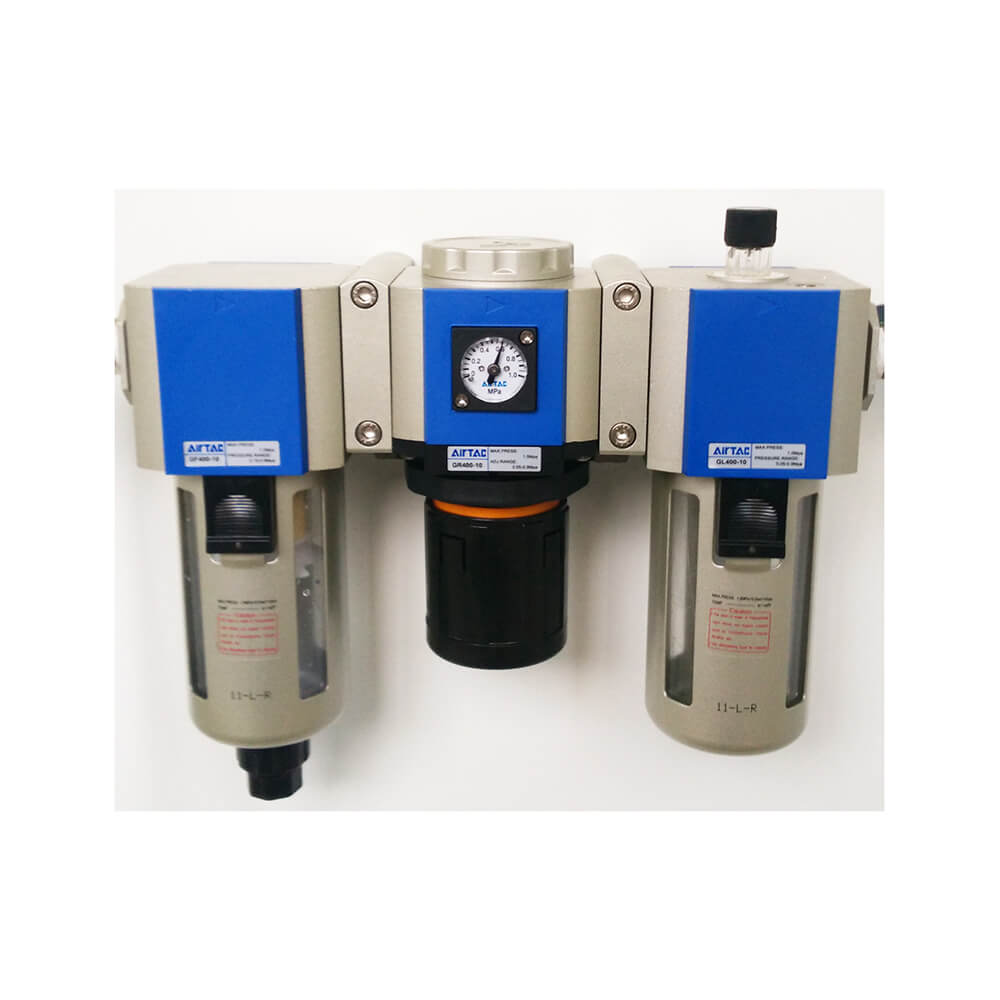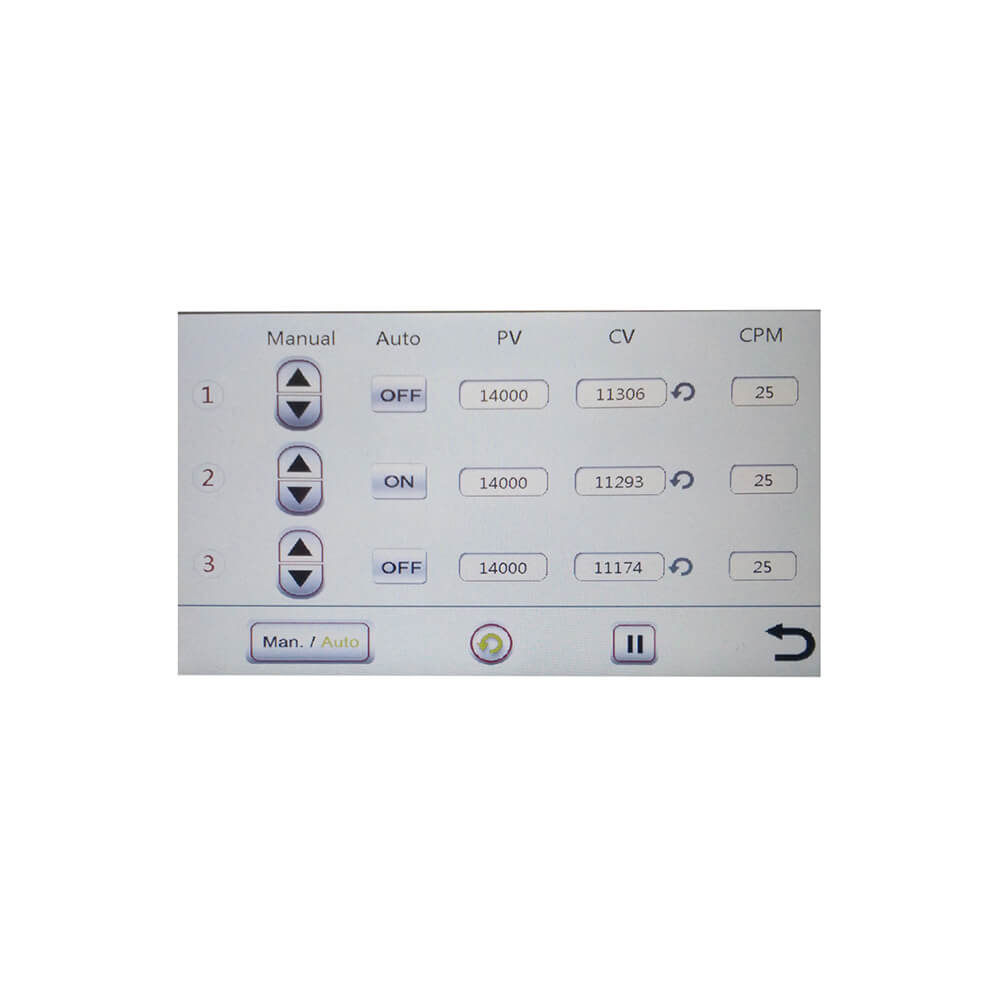Dynamic Seam Fatigue Tester TF152
The seam Fatigue Tester is applied to determine the strength of upholstery seam constructions which are covered by a standard foam composite cushion by imposing a cyclic, impact, and penetrating load. Dynamic Seam Fatigue Tester complies with ASTM D4033, etc. And TESTEX is one of the best Dynamic Seam Fatigue Tester manufacturers. If you are interested in it, welcome to visit our website.
Description
Application
Dynamic Seam Fatigue Tester is specially designed to test the strength of upholstery seam constructions which are covered by standard foam composite cushions by imposing a cyclic, impact, and penetrating load. Dynamic Seam Fatigue Tester enjoys a wide application in many industries, such as automobiles, garments, and fabrics.
A rubber-faced wheel of 127mm (5”) diameter impacts the fabric from a height of 150mm (6”) with a mass of 3.75 kg (8.25lbs), 25 times per minute for 7000 cycles. Besides, the Dynamic Seam Fatigue Tester has 3 work positions and 6 positions complying with the requirement. Moreover, it can make 23 or 27 cycles in one minute. Thus, it can be in operation at a relatively high speed.
Specifications
- Testing frequency: 25+/-2 cycle/min
- Testing cycles: 7,000
- Impacting mass: 3.75 kg
- Foam composite: 228.5 x 280 x 178 mm
- Dimensions of sewn specimen: 360 x 255 mm
- Driving mode: Pneumatic
Weight
| 350 kg |
Power
| 220/110 V | 50/60 Hz |
Dimensions
| Length: 1600 mm | Width: 860 mm | Height: 1450 mm |
Standards
| ASTM D4033 |
Test Principle
The dynamic seam fatigue test machine is suitable for testing the dynamic fatigue resistance of the seams of sofa fabrics. Fix a sample with a seam joint to a specimen seat containing an elastic foam pad, clamped on both sides, and use a free rotating rubber wheel of a certain weight, to impact the surface of the specimen continuously from a certain height, until the specified number of times to check the damage degree of the sample.
Why do We Need a Dynamic Seam Fatigue Test?
Dynamic seam fatigue testing machine is designed to test the seam fatigue degree of automobile seats, domestic sofas, and other surface materials. The surface materials of sofa seats, such as leather, synthetic leather, fabric, and so on, are stitching structures. And the seam strength of the connection and fatigue resistance for these materials put a direct effect on the service life of the seat. Apart from that, we can also predict the life effectively of the seat. In addition, we can provide a reference value for improving the service life of the sofa seat by testing the strength and life of the material seam.
It is simple to operate the dynamic seam fatigue tester produced by our company. Besides, the TF152 calls for less daily maintenance. It supports six working stations to test at the same time, and the number of stations can be customized according to customer requirements. The instrument adopts a caster wheel to support, making the movement flexible, adjustment convenient, and noise low when testing. Please contact us if you want to know the price of the dynamic seam fatigue tester.
Welcome to TESTEX – a professional textile testing instrument supplier. Dynamic Seam Fatigue Tester is on sale, contact us to get a detailed price quote.
5 reviews for Dynamic Seam Fatigue Tester TF152
You must be logged in to post a review.
Test procedure
Sampling
Pile sampling: determine the appropriate test method and take samples directly from the corresponding finished batch in random quantities, or take samples according to the agreement between the buyer and seller.
Test samples:
1 Cut a certain number of warp and weft samples. These samples are representative of any yarn, fabric structure, or pattern of the fabric specified to be tested.
2 Check that the polyurethane foam material is properly positioned. Then start the test as long as we ensure that it does not need to be turned, flipped, or repositioned.
3 Next, the tested specimen with some form of the seam will be fixed to a specimen-holding box which contains a piece of resilient polyurethane foam, forming a cushion-like object with an appropriate elevation. And the fatigue load is applied by a rubber-coated wheel that can be moved at will and automatically drops from a constant height onto the specimen. The wheel starts and continues to impact the sample at a constant rate until the mass loss can be measured. When 7000 operations are completed without any damage mentioned above, the test can be considered to be qualified.
Suggestions about use for varying fabrics at different degrees of damage
degree of damage | Recommended Use |
≤1000 times | can not apply to decorative fabrics for furniture |
1000-2000 times | Only use after applying reinforced joints and only in lightly loaded domestic applications |
2000-4000 times | Only use after applying reinforced joints and only in moderately loaded domestic applications |
4000-6000 times | Only use after applying reinforced joints and only in medium-loaded domestic applications |
6000-6500 times | At 6,000 to 6,500 cycles, the seam structure is strong enough to be used in ordinary household settings without reinforcing the seams |
Terminology
fatiguing load
the force that is repeatedly applied to a sample specimen under test in testing sewn seams.
Filling-to-filling seam
a sewn seam whose yarns in the filling direction on both sides of the sewn seam are perpendicular to the seam.
Reinforced seam
Appearing in sewn fabrics, a seam that contains an extra layer of material on the face or back side of the seam allowance.
Warp-to-filling seam
a sewn seam in which the warp yarns are perpendicular to the sewn seam on one side of the seam and parallel to the seam on the opposite side of that seam.
Seam allowance
the distance from the edge of a fabric to the parallel stitch line furthest from that edge.
Resistance to yarn slippage
at the seam, the force required to displace one or more yarns in a fabric from the original position, causing differences in alignments, spacing, or both.
Report
In general, the report should state that the specimens were tested in accordance with the test method D 4033. The material or product sampled and the method of sampling applied should also be described.
The concrete information should be included:
The average number of cycles that each type of seam ran.
The number of specimens under test for each type of seam.
Whether each type of seam was regarded as passing or failing or not.
Type of failure exhibited by the test specimen if there was the failure.




Natividad Emmie –
No problem. Great Machine!
Freda Morton –
The best textile testing machine I have ever bought!
Ann Kit –
I can complain about nothing. Good!
Jerry –
vraiment rapide et efficace.
Blithe Tommy –
Thank you! not yet tested on the performance, but I think everything will be fine!